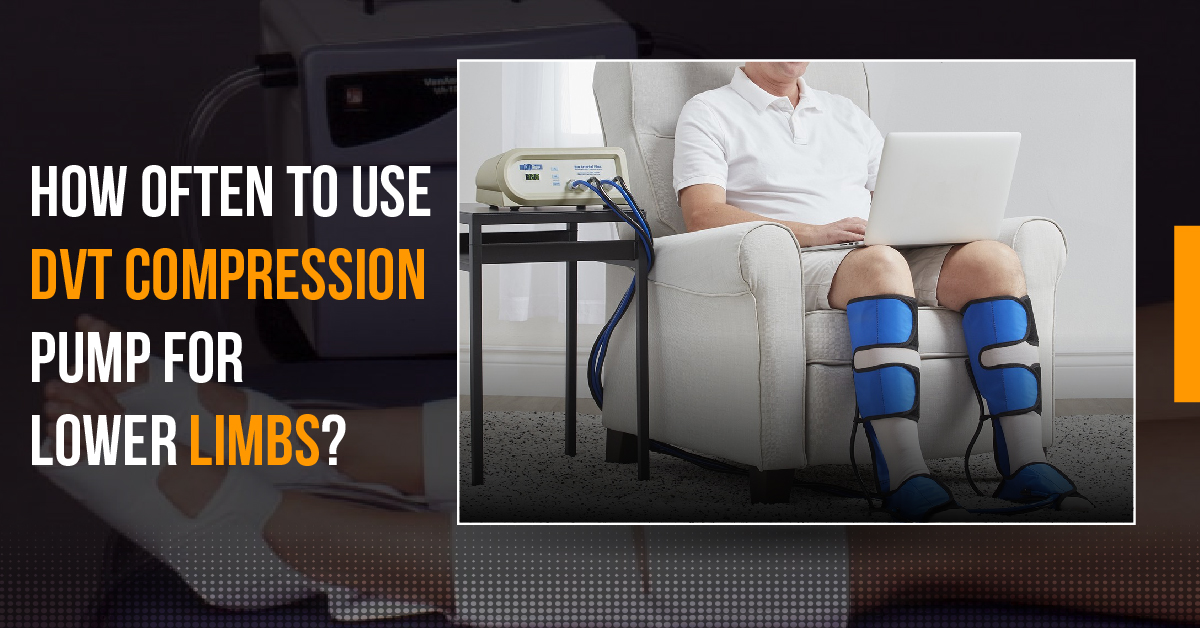The medical compression garments for preventing swelling or harmful lower limb diseases are now available in the market which can be purchased by anyone even without approval from doctors or physicians. The lack of knowledge about basic guidelines for using these DVT Compression Pumps can cause serious health issues for the user. There are some specific instructions or steps which are mandatory to follow while using the DVT pump. Before we get into full details about the parameters of using the Deep Vein Thrombosis compression pump, you should first understand their major functions.
What is a DVT Compression Pump?
There are specific medical devices that are used by patients who are suffering from blood clots or severe pain in their lower limbs. The DVT Compression Pumps are highly unique medical machines and garments that help to prevent any sort of blood accumulation in the deep parts of your veins and arteries.
They come with socks or stockings or long soft fabric sleeves which you can wear on your legs and let the pump do its job. These DVT pumps apply pressure to the sole of your foot after that on your ankle and then on your legs.
All of the compression exerting process allows blood to flow upwards and downwards with the help of compression garments and pumps. The expert podiatrists or orthopedics only recommend using these DVT machines when you have primary symptoms of leg cramps or inflammation on your foot. It is advisable to use them when an expert lower limbs doctor prescribes you otherwise do proper research before using these compression footwears for swelling or foot soreness.
How DVT Compression Pump prevent Blood Pooling?
The DVT Compression Pump performs its role by tightening your calf muscles and forcing the blood flow to reach all areas of your arteries and veins. The blockage of valves can prevent the lymphatic nodes to filter toxic waste in your lower limbs’ tissues. When blood circulation occurs at high velocity and your blood tube volume gets shrink then pooling of waste will possibly not occur.
The DVT pumps send a rhythmic flow of pressure to your legs which decreases the storage of lactic acid and pumps the blood to your heart to prevent the buildup of toxic waste. The valves have meshed into DVT machine chambers which enhance blood circulation and reduces the risk of swelling or blisters.
How often you can Use a DVT Compression Pump?
There is one question which majority of Deep Vein Thrombosis compression pump users ask about the duration of these garments can be worn on legs for reducing swelling. The answer is divided into some parts and we will discuss them briefly when and for the purpose you can use DVT compression garments.
Reason 1:
You can use compression devices when you are in the early stage of DVT or Lymphedema. You can use these pumps when you have an ankle injury or bumps on your legs. If the skin rash occurs on your legs, then ask your doctors for getting permission of buying compression devices. In this situation, you usually feel intense pain in your foot and legs which may lead to inflammation. These graduated compression pumps must be worn at least 10-15 hours daily with a 1 to 2 hours gap between the usage.
Reason 2:
The second reason is when you should avoid using these compression pumps and those situations are:
- When you are recovering from post-surgery.
- When you have untreated open wounds.
- When you experience color change on your leg.
- When you have serious heart surgery.
- When your bones are weaker due to slipped disc.
Before buying any compression garment always consult your best doctors or physicians for protecting yourself from any serious health consequences.
Pros of Using DVT Compression Pump
- Boost blood circulation and quick healing of your ankle ligaments.
- Reduces inflammation in lower limbs.
- Increases lymphatic drainage.
- Prevent blood clotting in your veins.
- Reduces the increase of DVT or PE (Pulmonary Embolism)
- Decreases your leg swelling and heel pain faster.
Side Effects of using DVT Compression Pump
The compression devices have some specific range of pressure and if that range exceeds more than 40mmHg then it may damage your lower limb muscle and permanently breaks blood vessels.
There are some cons of compression DVT pumps if used more than a limit which are:
- Compression devices could cause the failure of blood transfer to the heart and lungs.
- The irritation in your legs and the sole of your foot.
- Can cause pain in knee joints.
- Due to lack of oxygen, you may feel nausea or lightheadedness.
How to Get the Best Deep Vein Thrombosis Compression Pump?
Medshoola is the finest DVT Compression Pump online sellers’ company in the U.S. They have high-quality compression pumps, socks, stockings, and athletic gear.
Visit preventdvtnow.com for the best products which can help you to avoid any lower limb swelling or DVT/PE.



